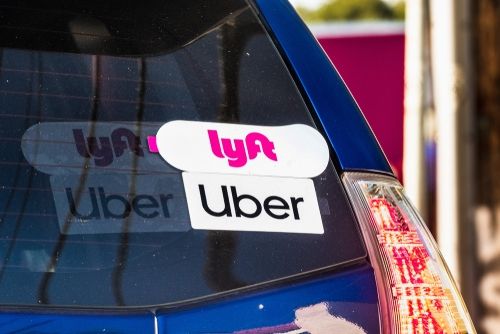
Uber (NYSE: UBER) and Lyft (NASDAQ: LYFT) are both synonymous with ride-hailing services. Uber is the market leader in the U.S. and many other countries, while Lyft is an underdog that operates only in the U.S. and Canada.
Uber also delivers food and other products through Uber Eats, but Lyft provides deliveries only through third-party partners such as DoorDash. Both companies also provide bike and electric scooter rentals in select cities.

Image source: Getty Images.
Uber and Lyft both went public in 2019. At the time of this writing, Uber's stock trades 36% above its IPO price of $45, but Lyft's stock has tumbled more than 80% below its IPO price of $72. Uber impressed investors as it streamlined its business and economies of scale kicked in, but Lyft's smaller business struggled with sluggish growth and persistent losses. Will Uber remain a better investment than Lyft for the foreseeable future? Let's take a fresh look at both ride-hailing companies to find out.
Which company is growing faster?
From 2018 to 2023, Uber's gross bookings grew at a compound annual growth rate (CAGR) of 23% as its revenue rose at a CAGR of 27%. Its number of monthly active platform consumers increased from 91 million at the end of 2018 to 150 million at the end of 2023. Its ride-hailing business suffered a slowdown during the pandemic, but it partly offset that pressure by facilitating more food deliveries through Uber Eats.
For 2024, Uber expects its gross bookings to rise 17%-18%. Analysts expect its total revenue to grow 17% this year and 16% to $50.6 billion in 2025. It expects its near-term growth to be driven by its subscription service Uber One, which surpassed 25 million members in its latest quarter; Uber Teens, which lets parents authorize rides and deliveries for their teenage kids; and its enterprise and healthcare delivery services.
From 2018 to 2023, Lyft's revenue grew at a CAGR of 15%. It only started disclosing its gross bookings on an annual basis in 2023. Its number of active riders grew from 18.6 million at the end of 2018 to 22.4 million at the end of 2023.
Lyft suffered a tougher slowdown than Uber during the pandemic in 2020 because it didn't offer food deliveries. It also struggled with more driver shortages than Uber throughout that crisis, and that pressure drove up its average prices.
For 2024, Lyft expects its gross bookings to grow about 17%, compared with its 14% growth in 2023. Analysts expect its revenue to rise 31% for the full year and to grow 15% to $6.6 billion in 2025. It attributes its recent growth to new features such as Price Lock, its subscription-based service that lets its riders lock in prices to set destinations; Lyft Media, which plays media content and ads in its app and in-car tablets; its delivery partnership with DoorDash; and dozens of updates for its core app.
Which company is more profitable?
Uber and Lyft both usually gauge their bottom-line growth with their adjusted earnings before interest, taxes, depreciation, and amortization (EBITDA). Uber's adjusted EBITDA turned positive in 2022, and that figure more than doubled in 2023. Lyft's adjusted EBITDA turned positive in 2023.
On the basis of generally accepted accounting principles (GAAP), Uber turned profitable in 2023. Its profit jumped as it divested several of its unprofitable noncore businesses, downsized its freight and recruitment divisions, and drastically cut costs. Uber expects its bottom line to stay in the black, and analysts expect its GAAP EPS to grow 117% in 2024 and 22% in 2025.
Lyft is still unprofitable on a GAAP basis, but it's also been cutting costs to stabilize its business. It also isn't eager to chase Uber into any overseas markets. Analysts expect the company to finally turn profitable in 2025.
Which stock is the better value right now?
Uber still has a bright future, and its stock still looks cheap at 15 times next year's adjusted EBITDA. However, its valuations are being compressed by the recent Federal Trade Commission probe of Uber One's subscription policies. Lyft, which doesn't face any similar probes, trades at just eight times next year's adjusted EBITDA.
Uber should eventually overcome its recent challenges, but Lyft might have a bit more upside potential at these levels. So while Lyft is the underdog and a riskier long-term investment than Uber, it might be a slightly better buy right now.
* The content presented above, whether from a third party or not, is considered as general advice only. This article should not be construed as containing investment advice, investment recommendations, an offer of or solicitation for any transactions in financial instruments.



